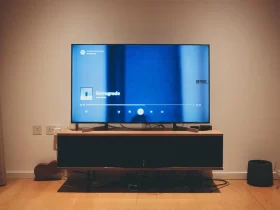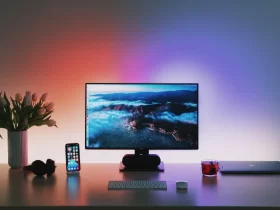In the ever-evolving landscape of display technologies, the quest for the optimal visual experience continues unabated. As users seek the pinnacle of image clarity and immersion, questions arise regarding the interplay between different resolutions and display devices. One such question that frequently emerges is: “Can you play 1440p content on a 4K monitor?” This inquiry delves into the compatibility and potential advantages of leveraging a 4K monitor to display content at a resolution lower than its native 4K resolution. To unravel this query, it’s imperative to understand the nuances of resolutions, the capabilities of modern monitors, and the implications of such a setup. This article embarks on a journey to explore the intricacies of playing 1440p on a 4K monitor, delving into the technical underpinnings, potential benefits, drawbacks, and practical considerations. By the end, readers will gain a comprehensive understanding of whether this configuration is viable and advantageous and how to navigate potential challenges effectively.
Can You Play 1440p On A 4k Monitor?
Yes, you can play 1440p content on a 4K monitor. Most 4K monitors support displaying lower resolutions, including 1440p. While the image won’t be as sharp as native 4K, it can still provide a high-quality viewing experience. Adjusting settings on your device or software may be necessary to ensure compatibility and optimal performance.
Understanding Resolutions: 1440p Vs. 4k
When discussing display resolutions, it’s essential to grasp the fundamental differences between 1440p and 4K. 1440p, also known as Quad HD or QHD, refers to a resolution of 2560×1440 pixels, offering a significant improvement over traditional Full HD (1920×1080). This resolution strikes a balance between high-definition clarity and reasonable hardware demands, making it a popular choice for gaming, multimedia consumption, and productivity tasks.
In contrast, 4K resolution, often referred to as Ultra HD (UHD) or 2160p, boasts an impressive 3840×2160 pixel count, delivering four times the pixels of 1080p. This heightened pixel density results in unparalleled image sharpness, clarity, and detail, ideal for immersive gaming experiences, professional content creation, and cinematic viewing.
While both resolutions offer remarkable visual fidelity, their respective advantages and drawbacks become more apparent upon closer examination. 1440p excels in providing a balance between performance and image quality, requiring less demanding hardware while still offering a noticeable upgrade in clarity over Full HD. On the other hand, 4K resolution dazzles with its unparalleled level of detail, delivering lifelike visuals that immerse users in their digital environments.
However, the trade-off for the superior image quality of 4K lies in its increased hardware requirements. Running games or applications at native 4K resolution demands powerful graphics processing units (GPUs) and robust system configurations to maintain smooth frame rates and fluid gameplay. Additionally, the higher cost associated with 4K monitors and compatible hardware may deter budget-conscious consumers or those seeking a more modest upgrade path.
How To Play 1440p On A 4k Monitor?
To play 1440p content on a 4K monitor, follow these steps:
Access Display Settings: Open your device’s display settings.
Select Resolution: Locate the resolution settings and choose “1440p” or “2560×1440.”
Confirm Settings: Apply the resolution change and confirm your selection.
Adjust Scaling (If Needed): Depending on your operating system, adjust scaling settings to optimize image size and clarity.
Check Graphics Settings: In some cases, you may need to adjust graphics settings in applications or games to match the chosen resolution.
Test And Optimize: Play content and adjust settings as needed to achieve the desired balance between performance and image quality.
Save Settings (If Applicable): If satisfied with the configuration, save settings to ensure they persist across reboots or system changes.
When To Consider Playing 1440p On A 4k Monitor?
Consider playing 1440p content on a 4K monitor in the following situations:
- Performance Optimization: When your hardware struggles to run games or applications smoothly at native 4K resolution, switching to 1440p can improve performance without sacrificing too much image quality.
- Compatibility Issues: If you encounter compatibility issues with certain software or games at 4K resolution, switching to 1440p may resolve these issues, as it’s a commonly supported resolution by most modern hardware and software.
- Balanced Image Quality: If you prefer a balance between image clarity and performance, playing 1440p content on a 4K monitor can provide a visually appealing experience with smoother performance compared to native 4K.
- Mixed Resolution Content: When dealing with content that varies in resolution, such as older games or videos recorded at 1440p, displaying them on a 4K monitor at their native resolution can prevent upscaling artifacts and maintain their intended visual quality.
- Cost Considerations: If you already own a 4K monitor but don’t want to invest in upgrading hardware to fully utilize its native resolution, playing content at 1440p can be a cost-effective compromise.
Advantages And Drawbacks
Advantages:
- Enhanced Image Quality: Playing 1440p content on a 4K monitor still offers superior image quality compared to traditional Full HD (1080p). Users can enjoy sharper details, smoother edges, and improved overall clarity, resulting in a more immersive viewing experience.
- Performance Optimization: By opting for a lower resolution like 1440p on a 4K monitor, users can potentially achieve better performance in demanding applications and games. This performance boost can lead to smoother gameplay, reduced input lag, and fewer frame rate drops, particularly on hardware that struggles with native 4K rendering.
- Compatibility: 1440p is a widely supported resolution across various hardware and software platforms. Using this resolution on a 4K monitor can mitigate compatibility issues that may arise with certain applications or games that don’t fully support native 4K rendering.
- Cost-Efficiency: Utilizing a 4K monitor to display 1440p content can be a cost-effective solution for users who already own a 4K display but don’t want to invest in upgrading their hardware to handle native 4K resolution. This approach allows them to leverage their existing equipment without compromising too much on visual quality.
Drawbacks:
- Slight Image Degradation: While playing 1440p content on a 4K monitor can still result in impressive image quality, there may be a slight degradation compared to viewing content at its native resolution. Users may notice a minor loss of sharpness or detail, particularly when viewing text or fine graphical elements up close.
- Scaling Issues: Depending on the monitor’s scaling settings and the content being displayed, users may encounter scaling issues that affect the overall visual presentation. Poor scaling algorithms or improper settings can lead to blurry images, uneven scaling, or improper aspect ratios, detracting from the viewing experience.
- Potential Performance Trade-offs: While opting for 1440p may improve performance on hardware struggling with native 4K rendering, users should be aware that there may still be performance trade-offs depending on the specific application or game. Some titles may still require significant hardware resources to achieve smooth gameplay at 1440p on a 4K monitor.
- Limited Future-Proofing: Choosing to play content at 1440p on a 4K monitor may limit future opportunities to fully utilize the monitor’s native 4K resolution. As hardware and software continue to advance, users may miss out on the potential benefits of experiencing content in its highest fidelity if they opt for lower resolutions.
Tips For Optimizing Performance And Image Quality:
- Graphics Settings Tweaking: Adjust in-game graphics settings to strike a balance between performance and image quality. Lowering settings like shadow quality, texture detail, and anti-aliasing can significantly improve performance without sacrificing too much visual fidelity.
- Resolution Scaling: Experiment with resolution scaling options available in your graphics settings. Scaling down the resolution slightly can improve performance while still maintaining a relatively sharp image on a 4K monitor.
- Refresh Rate Adjustment: Consider adjusting the refresh rate of your monitor to match the frame rate of your content. Lowering the refresh rate can reduce the workload on your GPU and improve overall performance.
- Driver Updates: Keep your graphics drivers up to date to ensure optimal performance and compatibility with the latest games and applications. GPU manufacturers regularly release driver updates that include performance optimizations and bug fixes.
- Overclocking (Advanced Users): If you’re comfortable with advanced tweaking, consider overclocking your GPU or CPU to squeeze out extra performance. However, proceed with caution and ensure proper cooling to prevent overheating and hardware damage.
- Monitor Settings Optimization: Explore your monitor’s settings menu for options such as sharpness, color temperature, and gamma correction. Calibrating these settings can enhance image quality and ensure colors are displayed accurately.
- Disable Background Processes: Close unnecessary background processes and applications while gaming to free up system resources. This can help reduce CPU and RAM usage, allowing your system to allocate more resources to gaming.
- Monitor Compatibility Check: Ensure that your chosen resolution (1440p) is supported by your monitor. Some monitors may have limitations on supported resolutions, so verify compatibility in the monitor’s specifications or user manual.
Summary
Playing 1440p content on a 4K monitor offers a balance between performance and image quality. While it enhances clarity and detail compared to 1080p, users may experience slight degradation in sharpness. To optimize performance and image quality, adjust display settings, including scaling and graphics options, to ensure smooth gameplay and minimize artifacts. Additionally, consider upgrading hardware if necessary to fully leverage the monitor’s capabilities. Ultimately, this setup provides a cost-effective solution for users seeking an immersive viewing experience.
FAQ’s
Can I Play 1440p Content On A 4k Monitor?
Yes, most 4K monitors support displaying 1440p content, offering a compromise between image quality and performance.
Will Playing 1440p On A 4k Monitor Reduce Image Quality?
Slightly. While still offering superior clarity compared to 1080p, there may be a minor loss in sharpness or detail.
Do I Need Special Hardware Or Software To Play 1440p On A 4k Monitor?
Typically, no. Most modern hardware and software support scaling 1440p content on a 4K monitor without additional requirements.
Are There Compatibility Issues When Playing 1440p On A 4k Monitor?
Generally, compatibility issues are minimal. However, some applications or games may require adjustments to settings for optimal performance.
Will I Notice A Significant Difference Between 1440p And Native 4k On A 4k Monitor?
Yes, native 4K resolution offers superior image quality, but the difference may not be substantial for all users, making 1440p a viable option for many.















